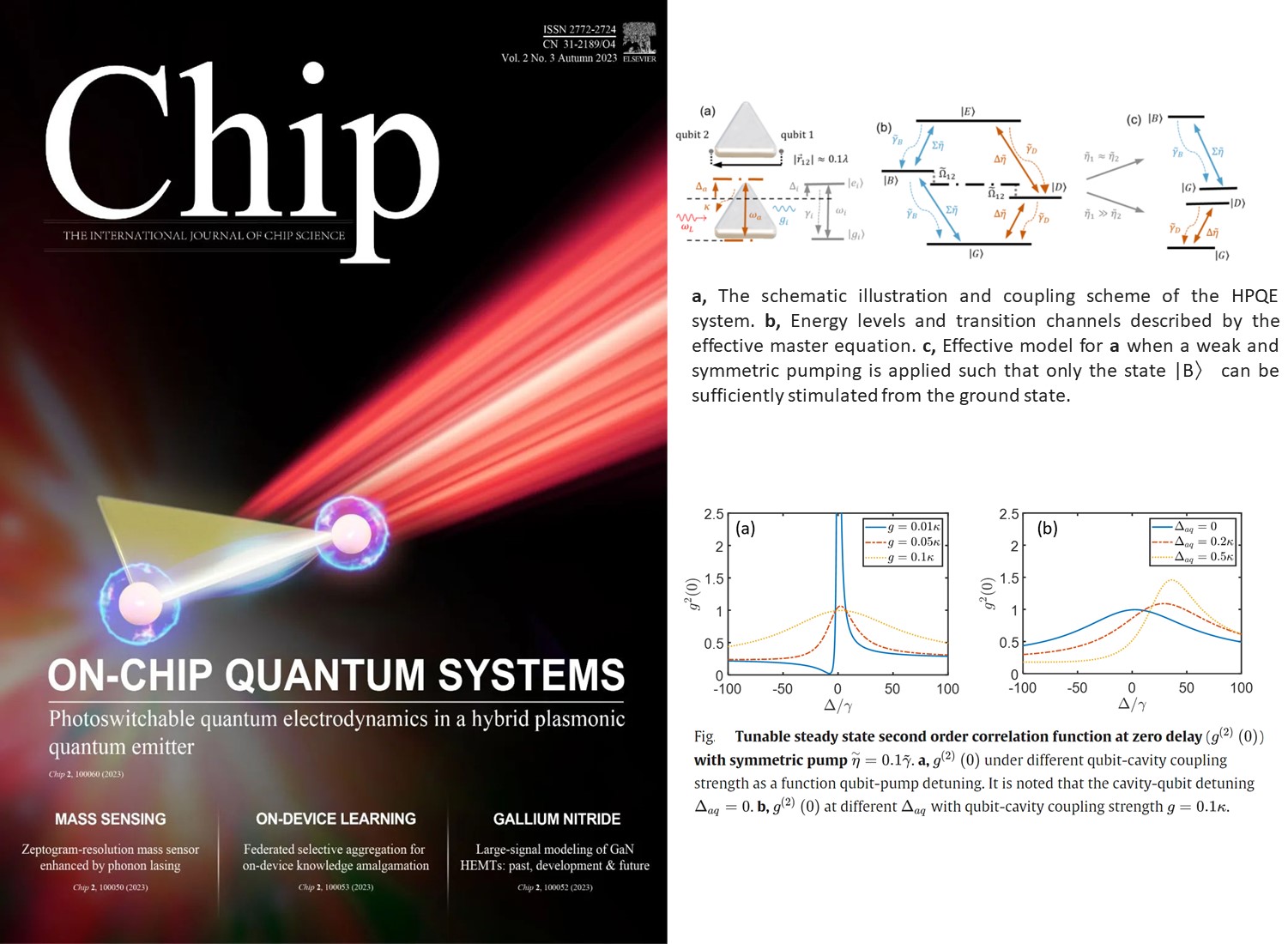Chip | Photoswitchable quantum electrodynamics in a hybrid plasmonic quantum emitter

Photoswitchable quantum electrodynamics in a hybrid plasmonic quantum emitter
Though many different hardware systems have been proposed and developed for quantum computing, the existing quantum systems remain bulky and fragile. The decoherence caused by the environmental noises will quench the quantum effect and turn the quantum system into a classical one. Protecting quantum states from the dissipative environment and operation errors is of primary importance². One of the strategies to protect quantum information is to design decoherence-free subspaces (DFS), where the influences from the environment on different qubits cancel each other and make the whole system free from decoherence. It is noted that in the DFS the decay rate is highly relevant to the interqubit distance, i.e., the noiseless quantum code can be realized by reducing the interqubit distance. In the existing quantum system, the two qubits experience opposite phases of the excited light field to maximize the excitation of the dark state and to avoid the excitation of the bright state, giving a large interqubit distance and a rapid dissipation of the dark state³.
The key to addressing this fundamental problem is to break the traditional anti-phase-matching rule in the excitation of dark states. In this work, we propose a hybrid plasmonic quantum emitter (HPQE) consisting of two qubits and a dissipative plasmonic nanocavity (PNC), stimulated by a monochromatic laser. In contrast to the conventional anti-phase-matching condition, herein the polarization-dependent electromagnetic field enhancement of the PNC allows the excitation of the dark state at a deep subwavelength scale, showing a total disregard for the anti-phase-matching condition. The highly dissipative PNC makes a tremendous difference in the decay rate between the dark state and the bright state, providing a new strategy to prepare the dark state with an asymmetric pump of the plasmonic hot spots, where the unwanted bright state is removed by its high decay rate. In this scheme, deep subwavelength interqubit entanglement with both pulsed pump and continuous pump can be achieved, as shown in Fig. 2. These benefits enable the preparation of a nearly perfect DFS decoherence-free from both the cavity mode and the vacuum environment (>96% suppression of the vacuum spontaneous decay).
More interestingly, a switching of pumping light polarization turns the dark state in the DFS into the bright state, which has a single-photon emission rate of twice as high as that of a single qubit coupled to a PNC (while the quantum efficiency remains unchanged)⁴. The single-photon emitter characteristic arises from the interqubit interaction induced photon-blockade, mimicking the nonlinearity of the Jaynes-Cummings ladder⁵. The second-order correlation function at zero delay of the bright state shows a wide-range tunability down to near zero, as shown in Fig. 3. The HPQE in this work provides an all-solid-state, robust, compact, and reconfigurable quantum platform for future quantum computing chips without rigorous environmental requirements.
参考文献:
1. Liu, Y., Zhou, H., Xue, P., Lin, L. & Sun, H.-B. Photoswitchable quantum electrodynamics in a hybrid plasmonic quantum emitter. Chip 2, 100060 (2023).2. Suter, D. & Álvarez, G. A. Colloquium: protecting quantum information against environmental noise. Rev. Mod. Phys. 88, 041001 (2016).3. González-Tudela, A., Paulisch, V., Chang, D. E., Kimble, H. J. & Cirac, J. I. Deterministic generation of arbitrary photonic states assisted by dissipation. Phys. Rev. Lett. 115, 163603 (2015).4. Filter, R., Słowik, K., Straubel, J., Lederer, F. & Rockstuhl, C. Nanoantennas for ultrabright single photon sources. Opt. Lett. 39, 1246–1249 (2014).5. Birnbaum, K. M. et al. Photon blockade in an optical cavity with one trapped atom. Nature 436, 87–90 (2005).
论文链接:https://www.sciencedirect.com/science/article/pii/S2709472323000230




